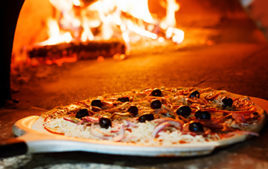 As the summer heats up, manufacturers are reporting some icy trends that club and resort properties should be following when looking to purchase or replace ice machines over the next few years.
As the summer heats up, manufacturers are reporting some icy trends that club and resort properties should be following when looking to purchase or replace ice machines over the next few years.
“Ice machines that feature quick recovery in ice making, reduced noise and smaller footprints are ideally suited for hospitality settings like clubs and resorts,” says a representative with a leading ice-machine manufacturer. “Furthermore, units that offer low utility costs and easy cleaning and maintenance provide additional benefits.”
Diagnostic code displays and easily accessible QR codes that link to machine-specific information can assist technicians as they diagnose problems to minimize downtime.
And features such as external air filters, removable components, and built-in antimicrobial protection (along with regular cleaning and sanitizing) can help maintain a clean machine.
“Food safety and sanitation are always a concern, so hands-free dispensing is another trend to pay attention to,” says the Director of Customer Support of a different leading manufacturer and distributor of ice machines. “Pure, clear ice is also important.”
New Forms
Beyond just its clarity, ice forms continue to evolve, with two types making headlines: large, square cube ice and chewable (or cubelet) ice.
“Different ices work well in different applications,” continues the Director of Customer Support. “We often see cubelet ice on golf courses, dispensing ice and water along the way.”
Similarly, large, square cubes are fast becoming a favorite of bartenders, mixologists and beverage directors, for both aesthetics and function.
Lease or Buy
Another trend the Director of Customer Support is seeing as she visits trade shows and talks with customers is a growth of operators leasing ice machines, instead of buying them.
“Most operators don’t think about ice until they’re out of it—and then it’s critical,” she says. “We’re seeing more leasing companies provide the ice machine for a fee or subscription, thus guaranteeing you never run out of ice.”
More in less
More capacity in a smaller footprint is another big trend, reports the Director of Marketing at a different company that manufactures, distributes and supplies a wide range of ice-related products.
“Space in the kitchen is highly valuable,” he says. “Operators want ice machines that produce more ice, but take up less space.”
Following the rules
The challenges that manufacturers face as they work to meet these trends is the impact the new performance standards mandated from the U.S. Department of Energy (DOE) will have on ice machines.
On the last day of 2014, the DOE completed new standards for commercial ice makers.
With a compliance date of January 1, 2018, the new rules will reduce energy consumption by 10–25% for the most common ice machines (i.e., machines that make cube ice and can produce between 50 and 2,500 lbs. of ice per day).
The new standards also expand coverage to larger machines with capacities of up to 4,000 lbs. And for the first time, they will also cover machines that make flake and nugget ice.
In addition to saving energy, the new standards will help to reduce the amount of water wasted during the ice-making process. (The DOE estimates that the standards will save 37.5 billion gallons of water over 30 years of sales.)
The Director of Marketing of the Colorado company—who is also a Board Member of the Air-Conditioning, Heating & Refrigeration Institute—estimated that 85% of ice machines being sold today would be illegal in 2018 if they weren’t reengineered to be more energy-efficient.
“While that’s occurring, the Environmental Protection Agency is exploring, dabbling and sword-rattling about refrigerants,” he adds. “They’re working to mandate the obsolescence of certain refrigerants by 2020.”
How these new laws will affect machines and manufacturers is anyone’s guess.
“As manufacturers we have a lot of work to do,” says the Director of Marketing. “But we’re all dedicated to making the best possible ice machines.”




